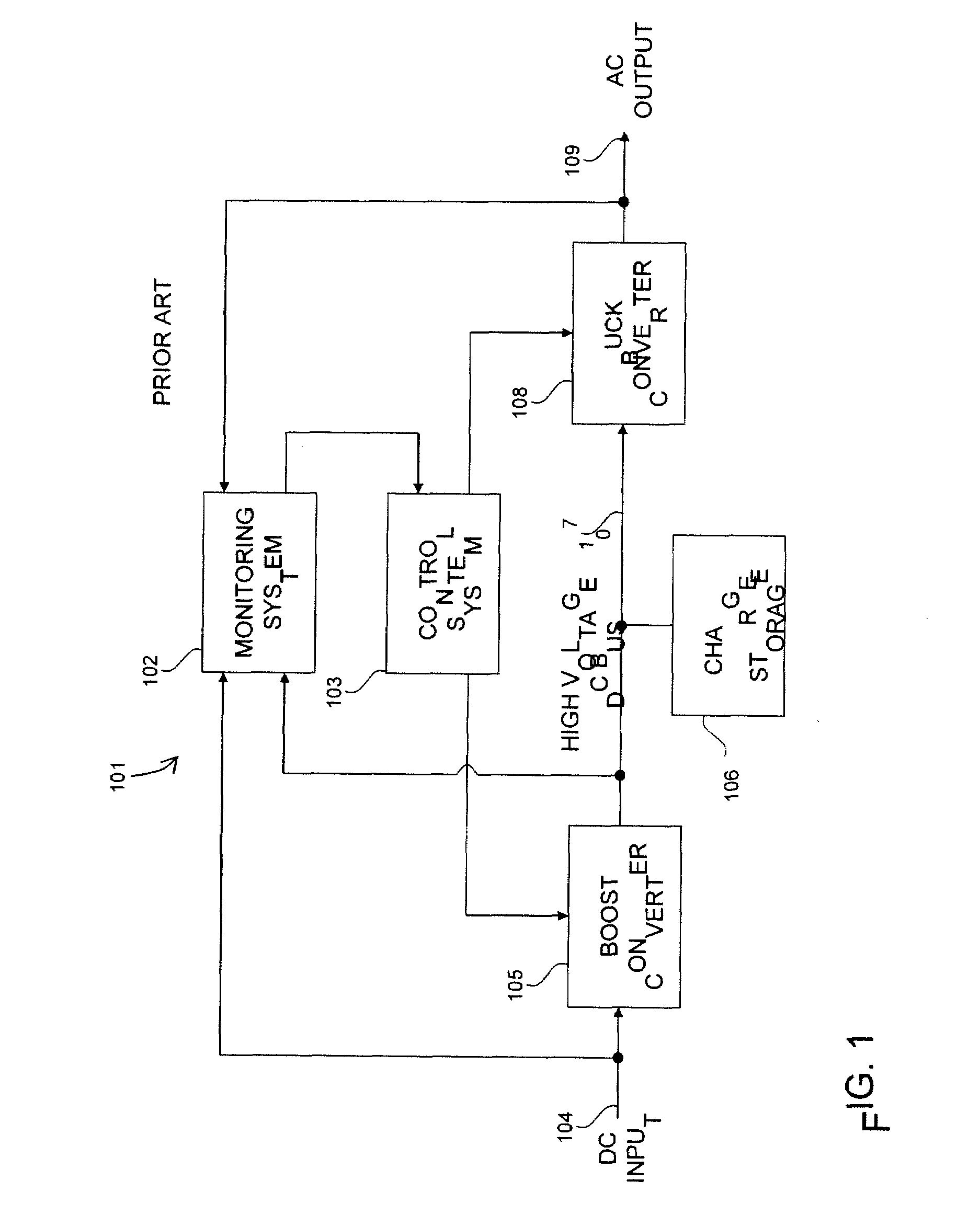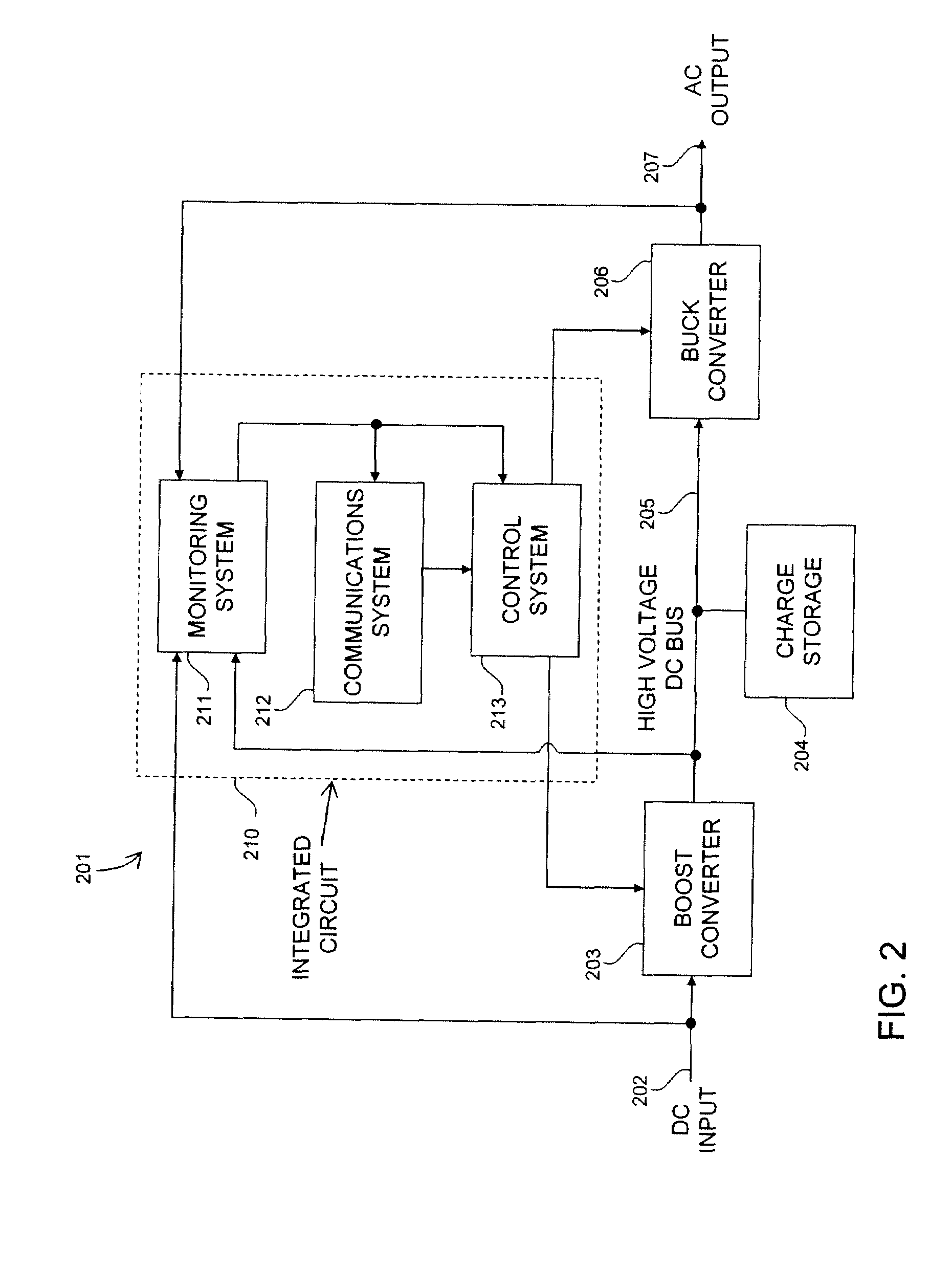Photovoltaic module-mounted ac inverter
a photovoltaic module and inverter technology, applied in the direction of electric variable regulation, process and machine control, instruments, etc., can solve the problems of unsatisfactory reactive power, no power is efficiently transferred from the inverter into, and minimal impact on the total power produced by the pv system, so as to reduce the current requirements of the inductors, increase ripple frequency, and reduce the effect of current requirements
- Summary
- Abstract
- Description
- Claims
- Application Information
AI Technical Summary
Benefits of technology
Problems solved by technology
Method used
Image
Examples
second embodiment
[0039]Referring now to FIG. 7, a tandem single-inductor, bipolar-output boost converter 701 according to the present invention includes a DC input 702, a first input switch PWMI1703, a first input switch current ISW1730, a first ground switch PWMG1708, a first negative output diode 704, a first negative output diode current IDN1731, a negative output DC voltage 705, a negative output capacitor 707, an inductor 706, a first positive output diode 709, a first positive output diode current 732, a positive output DC voltage 710, a positive output capacitor 711, a second input switch PWMI2723, a second input switch current ISW2733, a second ground switch PWMG2728, a second negative output diode 724, a second negative output diode current IDN2734, a second positive output diode 729, a second positive output diode current 735 and a ground terminal 713. Components 702, 703, 704, 705, 706, 707, 708, 709, 710 and 711 comprise a first single-inductor, bipolar-output boost converter. Components...
first embodiment
[0040]Referring now to FIG. 8, a timing diagram of a single-inductor, bipolar-output boost converter operating in two-cycle mode 501 according to the present invention includes waveforms for signals PWMI1802, PWMG1803, first switch current ISW1804, first inductor current IL1805, first positive output diode current IDP1806, first negative output diode current IDN1807, signals PWMI1808, PWMG1809, second switch current ISW1810, second inductor current IL1811, second positive output diode current IDP1812, second negative output diode current IDN1813, positive DC output voltage +VDC 814 and negative DC output voltage −VDC 815. The description of the signals and their relationships is given in the description for FIG. 7. The timing diagram 801 shows one possible result and a person skilled in the art will recognize that the relative timing and signal level scales can be adjusted over a large range with no change in fundamental circuit behavior. The first inductor 706 and the second induct...
PUM
 Login to View More
Login to View More Abstract
Description
Claims
Application Information
 Login to View More
Login to View More - R&D
- Intellectual Property
- Life Sciences
- Materials
- Tech Scout
- Unparalleled Data Quality
- Higher Quality Content
- 60% Fewer Hallucinations
Browse by: Latest US Patents, China's latest patents, Technical Efficacy Thesaurus, Application Domain, Technology Topic, Popular Technical Reports.
© 2025 PatSnap. All rights reserved.Legal|Privacy policy|Modern Slavery Act Transparency Statement|Sitemap|About US| Contact US: help@patsnap.com



